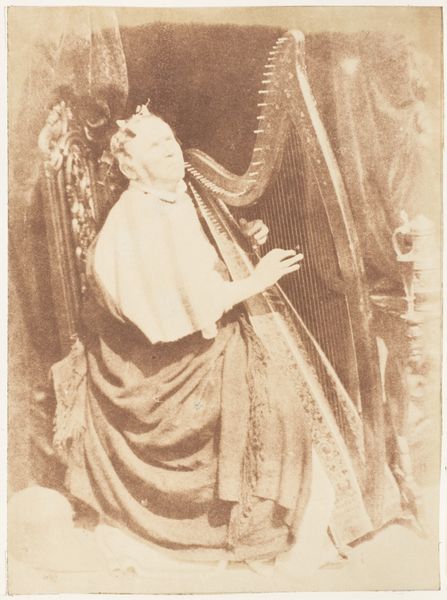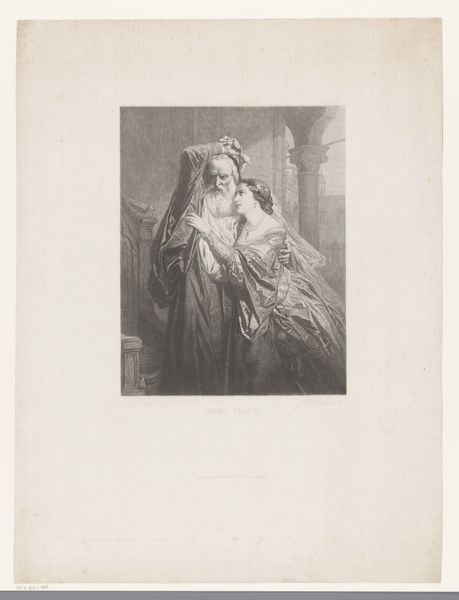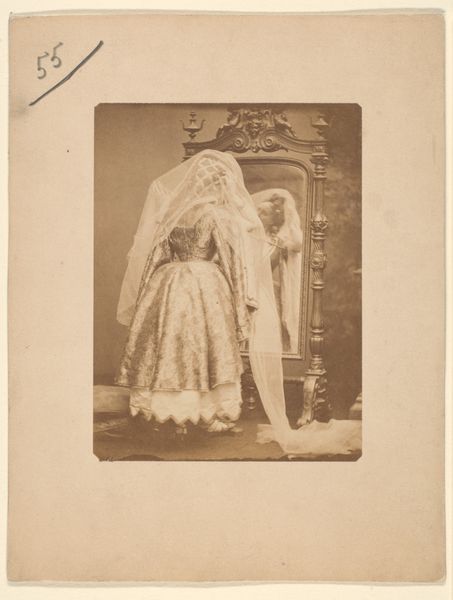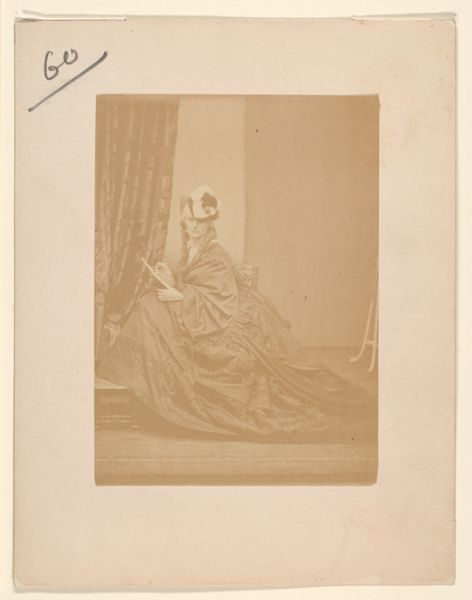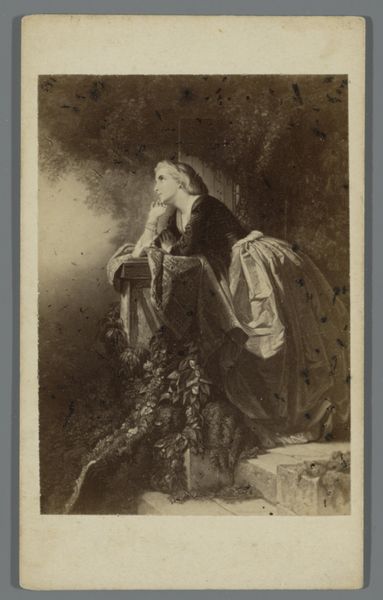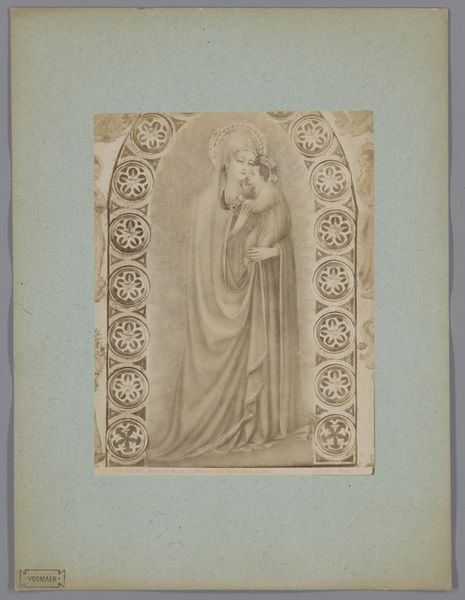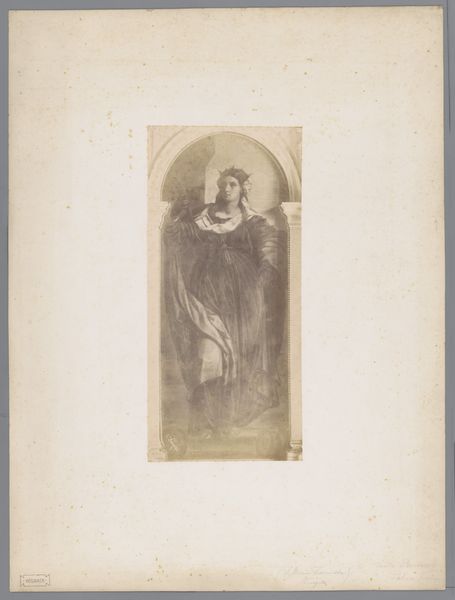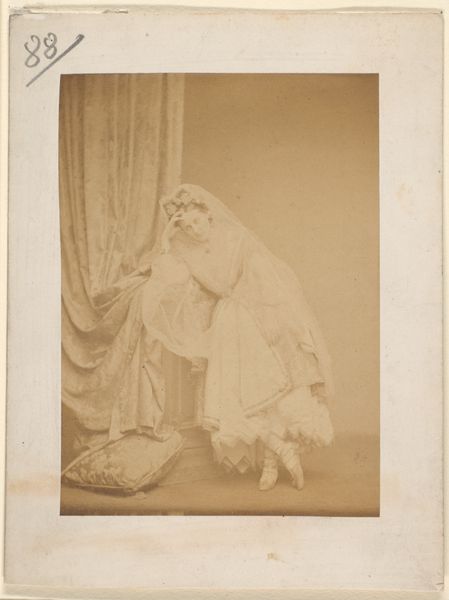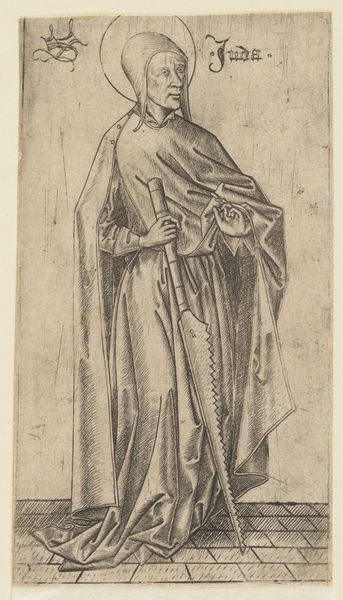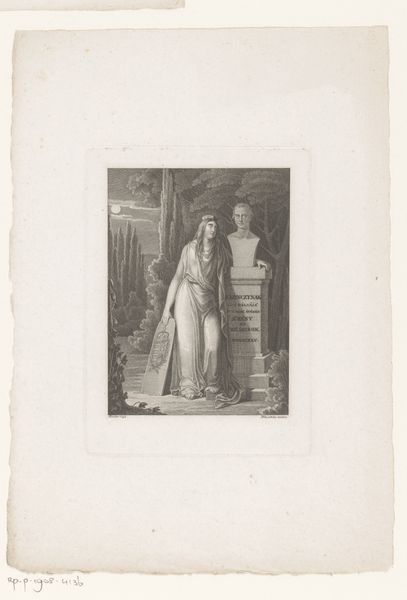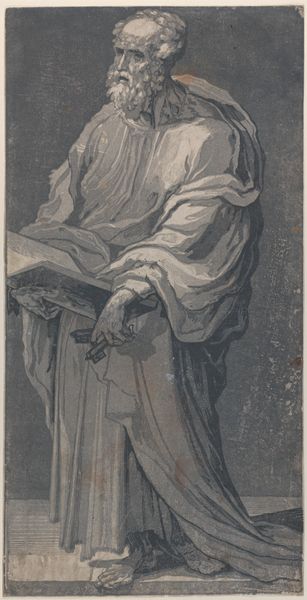![[Reine d'Etrurie] by Pierre-Louis Pierson](/_next/image?url=https%3A%2F%2Fd2w8kbdekdi1gv.cloudfront.net%2FeyJidWNrZXQiOiAiYXJ0ZXJhLWltYWdlcy1idWNrZXQiLCAia2V5IjogImFydHdvcmtzL2MwYWY5YzhlLWY1MGYtNGQ5YS1iZTZlLTE1ZjlmYjcwNTJjYi9jMGFmOWM4ZS1mNTBmLTRkOWEtYmU2ZS0xNWY5ZmI3MDUyY2JfZnVsbC5qcGciLCAiZWRpdHMiOiB7InJlc2l6ZSI6IHsid2lkdGgiOiAxOTIwLCAiaGVpZ2h0IjogMTkyMCwgImZpdCI6ICJpbnNpZGUifX19&w=3840&q=75)
Dimensions: 12.3 x 8.9 cm (4 13/16 x 3 1/2 in.)
Copyright: Public Domain
Editor: This is Pierre-Louis Pierson’s '[Reine d'Etrurie]', a photograph from the 1860s. It’s printed on toned paper, and it shows a woman gazing at her reflection in a large mirror. The soft focus and sepia tones give it a dreamlike quality. What catches your eye about this photograph? Curator: Well, consider the materiality. This isn’t just an image, it’s a physical object. The toned paper speaks to specific photographic processes of the time, the controlled alchemy required. Ask yourself, who was able to access this technology and these luxurious materials? How does the availability of these things inflect the scene in the photo? Editor: That’s a good point. It seems to suggest a level of wealth and status. Curator: Exactly. And think about the labour involved, both in the taking and making of the photo. Setting up the shot, printing, the darkroom practices… then there is the labor suggested by the woman herself, arranging her garments. How does this image partake of romantic ideals, or subvert them? Editor: So you're saying that beyond just being a pretty picture, it’s tied to economic and social realities of its time? Curator: Precisely. The very materials and means of production speak volumes about class, access, and the construction of identity in the 1860s. And note her gown-- is it couture, made for display? How does that contribute to this photograph? Editor: I never thought about photography that way before! I was too focused on the subject, but now I see how much the physical components reveal about its historical context. Curator: Materiality is a language; we only need to learn to listen. Hopefully next time you approach an image you think about how materials create the art and also tell the stories about its consumption.
Comments
No comments
Be the first to comment and join the conversation on the ultimate creative platform.
